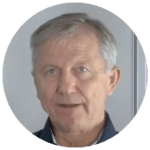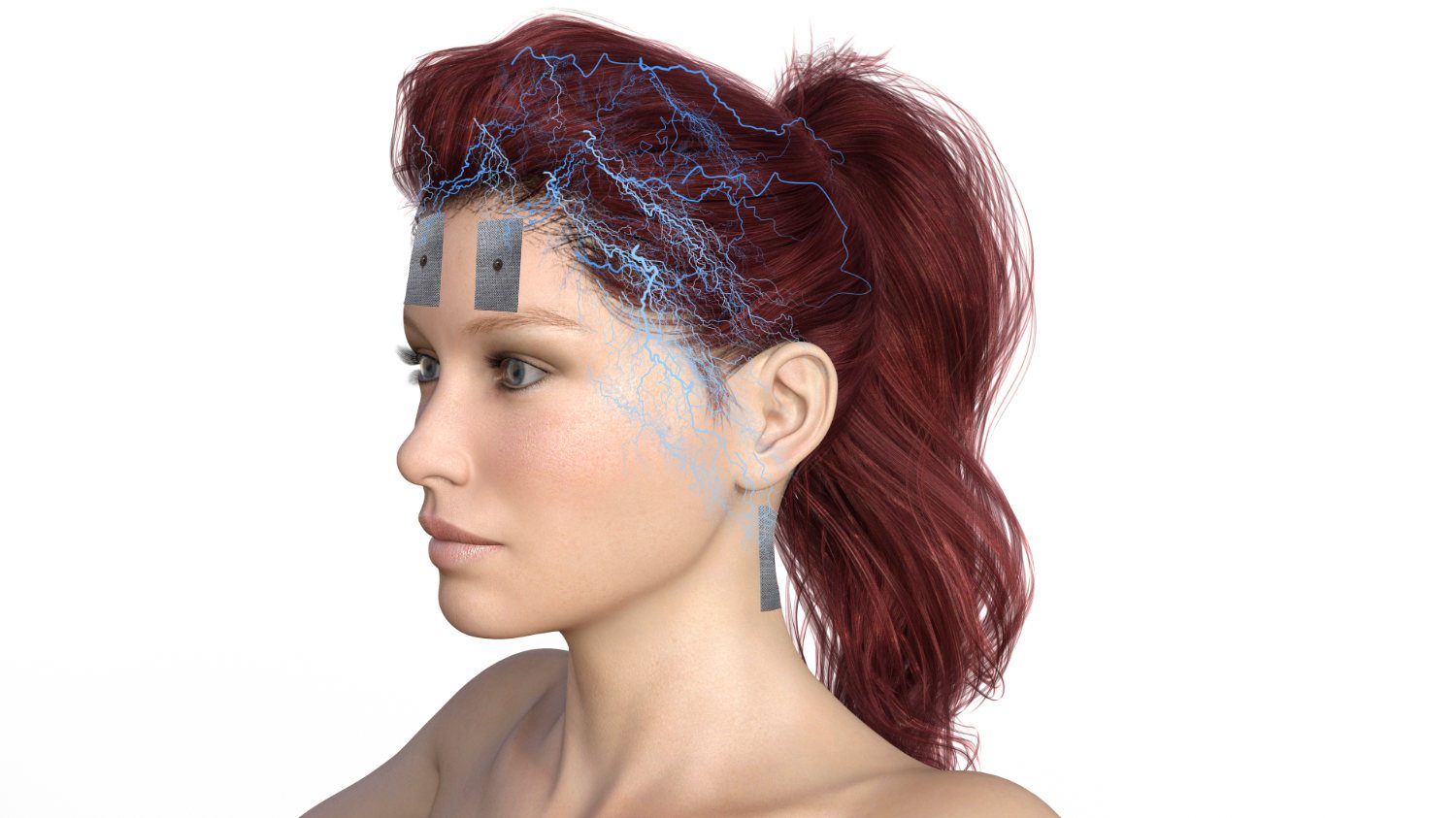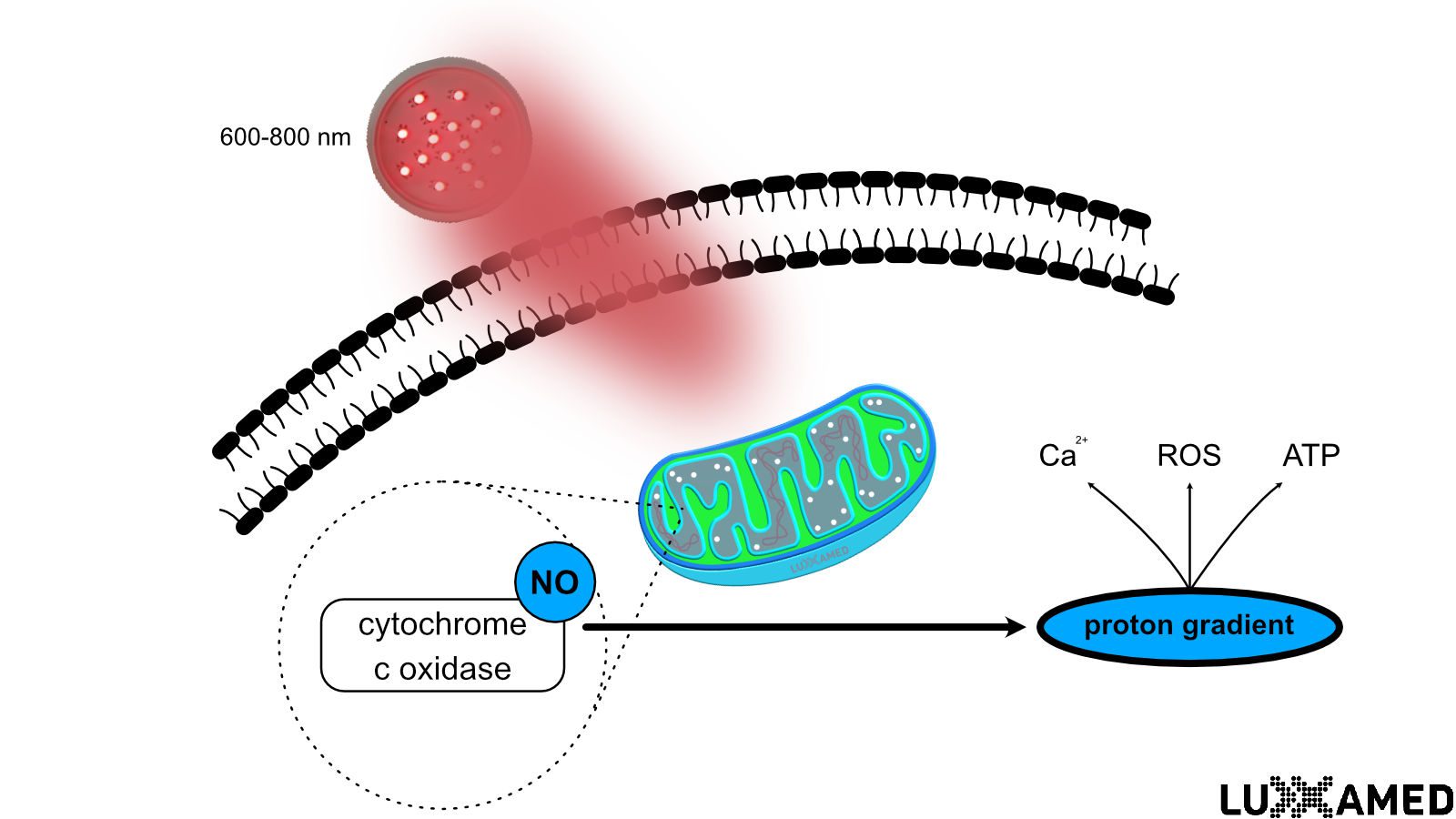Introduction to microcurrent therapy
Microcurrent therapy is based on the stimulation of biological tissue using very weak electrical currents in the microampere range. These currents are comparable in strength to the body’s own bioelectric processes and are used to promote tissue healing, reduce pain and inhibit inflammation. The use of microcurrent devices, such as the Luxxamed system, enables non-invasive therapy, which has received increased attention in recent years due to its versatile applications in various medical fields, including pain therapy, neurology and sports medicine.
Mechanisms of the bidirectional ion current
A central principle of microcurrent therapy is the bidirectional ionic current, which is generated by using two electrodes: a positively charged anode and a negatively charged cathode. These electrodes are placed on the surface of the patient’s skin and generate a current flow through the tissue. The current moves in two directions:
- Positive ions such as sodium (Na⁺), calcium (Ca²⁺), magnesium (Mg²⁺) and potassium (K⁺) migrate to the negatively charged cathode.
- Negative ions such as chloride (Cl-), nitrate (NO₃-), sulphate (SO₄²-) and carbonate (CO₃²-) migrate to the positively charged anode.
This bidirectional flow of ions influences the ionic balance of the cells and contributes to the regulation of cell functions. The movement of ions through the tissue enables an improvement in the electrical properties of the cell membranes, which in turn supports cellular repair and healing processes.
ATP production in the mitochondria through microcurrent
A particularly fascinating effect of microcurrent therapy is the support of ATP production in the mitochondria. ATP (adenosine triphosphate) is the primary energy molecule of cells and plays a central role in almost all biological processes, including muscle contraction, cell division and protein synthesis.
The theory underlying this process is Peter Mitchell’s chemiosmotic theory. This states that ATP production is driven by the transport of protons (H⁺) across the inner mitochondrial membrane. In microcurrent therapy, this proton transport is amplified by the current flow between the electrodes by:
- Hydroxide ions (OH-) are formed at the cathode and migrate to the anode.
- protons (H⁺) are formed at the anode, which migrate to the cathode.
This bidirectional flow of ions promotes the proton gradient across the mitochondrial membrane, which is necessary to convert ADP (adenosine diphosphate) into ATP. Studies have shown that microcurrent is able to increase ATP production by a factor of 3 to 5, especially at currents in the range of 100 to 500 microamperes (µA).
Microcurrent and tissue healing
Another key area of application for microcurrent therapy is the promotion of tissue healing. Microcurrent can support the healing process of damaged tissue through its effect on the mitochondria and cell membranes. These effects have been demonstrated in various studies, which have shown that microcurrent can significantly improve the healing rate of skin and muscle injuries. The increase in ATP production provides more energy, which is needed for cell regeneration and repair processes. Microcurrent also improves blood circulation and reduces inflammation, which contributes to faster tissue regeneration.
Therapeutic applications of microcurrent therapy
The areas of application for microcurrent therapy are diverse. The most common areas of application include
- Pain relief: Microcurrent is often used to treat chronic pain, especially neuropathic pain, muscle pain and joint problems.
- Anti-inflammatory: By promoting ATP production and regulating the ion balance, microcurrent can reduce the production of pro-inflammatory cytokines and thus inhibit inflammatory processes.
- Accelerates wound healing: Microcurrent supports the natural healing process of skin and tissue injuries by stimulating cell activity and promoting collagen synthesis.
Conclusion
Microcurrent therapy is a promising and non-invasive method for promoting healing and pain relief. Its mode of action is based on bidirectional ionic current, which promotes the movement of ions through the tissue and cell membranes, leading to improved ATP production in the mitochondria. This process provides the cells with the necessary energy to accelerate healing processes, reduce inflammation and support cell regeneration.
The growing number of scientific studies and clinical applications clearly show that microcurrent therapy is a valuable tool in modern medicine. It offers a gentle but effective way to support natural healing processes and improve the well-being of patients. Further research will be required to better understand the exact mechanisms and to further optimise the application protocols. Nevertheless, the evidence to date suggests that microcurrent therapy offers significant potential for a wide range of therapeutic applications.
![]() Deutsch
Deutsch ![]() Italiano
Italiano











